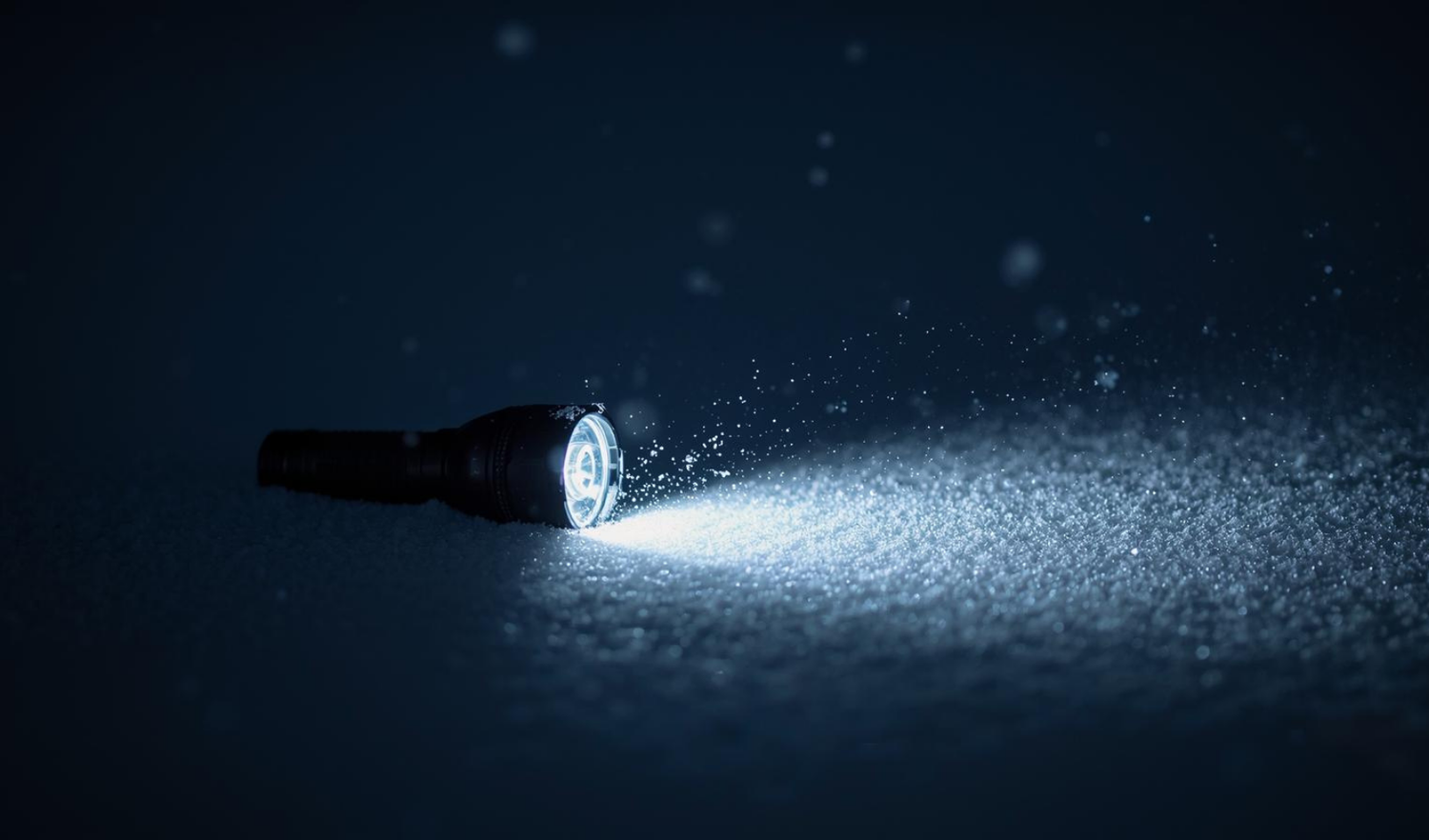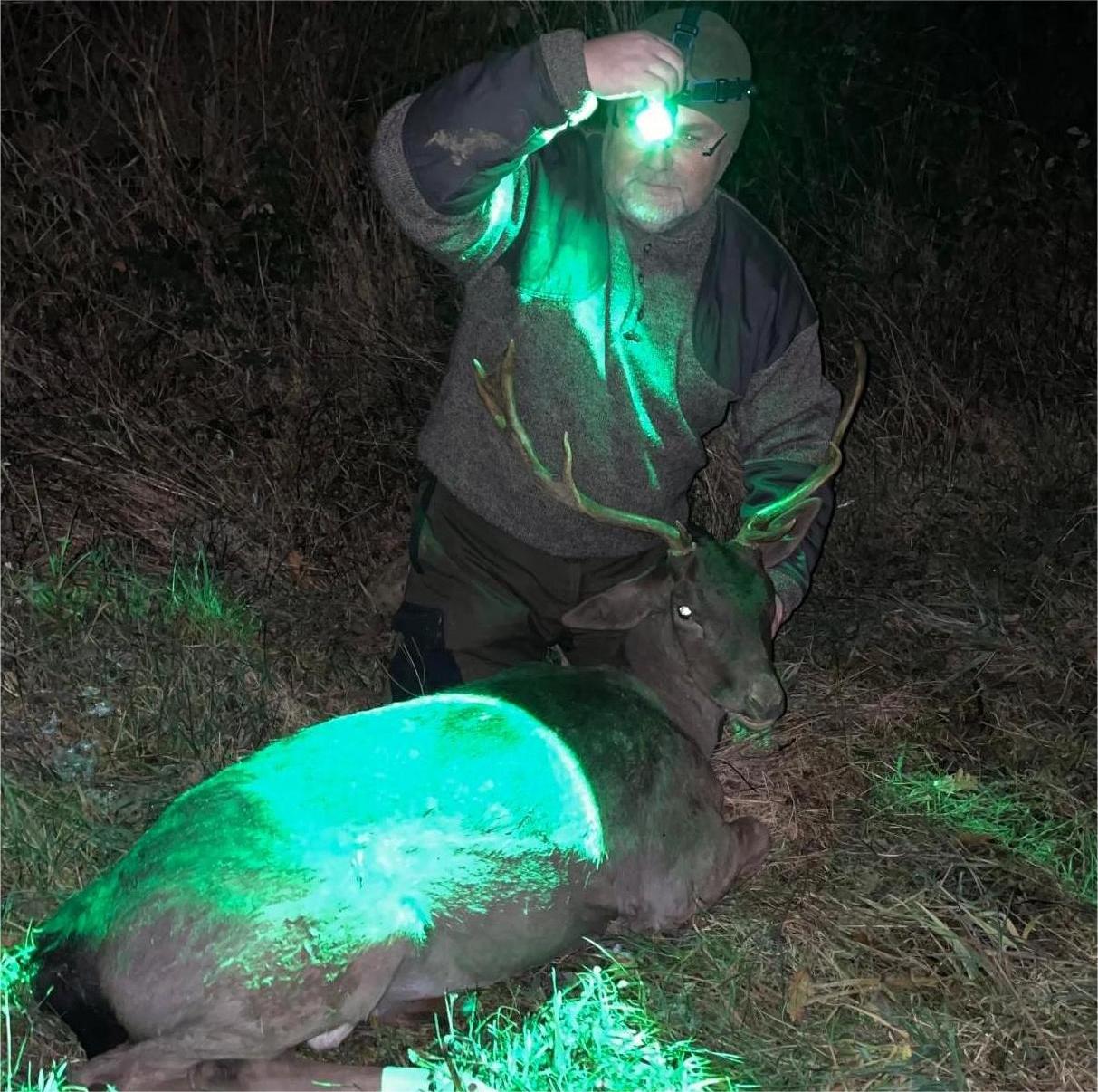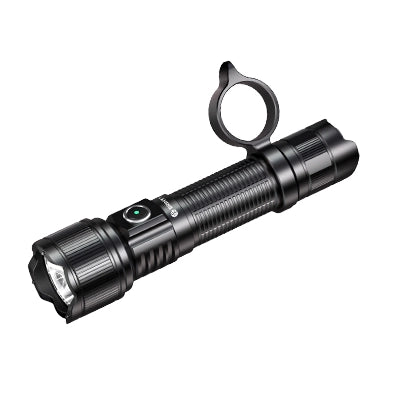Introduction: Why Weather Matters More Than You Think
Every hunter knows the power of good optics and steady aim — but lighting is the most underestimated factor in the field. Weather can completely change how your flashlight performs. Fog, rain, and snow don’t just limit visibility; they distort your beam, drain your battery, and can even expose your position.
Understanding how weather affects your hunting flashlight performance isn’t just about brightness — it’s about control, adaptation, and safety. Whether you’re tracking in the Nordic wilderness or enduring a wet North American dawn, your light must work with the weather, not against it.
The Science Behind Light and Weather
To use your light effectively, you must understand how different weather conditions affect its behavior:
- Fog or Mist: Tiny water droplets scatter light, creating the dreaded “white wall effect.” A strong throw beam reflects back and blinds you. In fog, less brightness often means more visibility.
- Rain: Raindrops cause micro-reflections, reducing the beam’s reach. The denser the rainfall, the more diffused your light becomes — especially with wide flood beams.
- Snow: Snow is highly reflective. Even moderate brightness can cause glare or eye strain. Warm or neutral tones perform better than cool white light in snow-covered landscapes.
Weather changes how photons travel — and therefore how you should adapt your beam type, color, and angle.
Choosing the Right Beam Pattern and Color
Different weather calls for different beam control:
- In fog: Avoid narrow throw beams. Instead, use a floodlight pattern with soft edges. It helps illuminate your immediate path without reflecting harshly off the mist.
- In rain: A balanced beam — somewhere between flood and throw — provides both coverage and penetration. Adjust your angle slightly downward to reduce glare.
- In snow: Lower your brightness and use a warmer light tone. Neutral white (4000–5000K) or red light modes reduce reflection and maintain natural contrast.
Color also matters:
- Red light preserves night vision and prevents startling wildlife.
- Green light enhances visibility without overexposing snow or fog.
- White light remains the most versatile, but it should be moderated carefully depending on the conditions.

Battery and Runtime in Cold & Wet Conditions
Cold and moisture are natural enemies of every flashlight. In low temperatures, chemical reactions in lithium batteries slow down — meaning you lose runtime and brightness faster. A light that promises 3 hours on paper might last only half in sub-zero weather.
Practical strategies to counter cold-weather battery drain:
- Keep spare 18650 batteries inside your jacket pocket to stay warm.
- Choose lights with USB-C rechargeable systems for on-the-go top-ups.
- Avoid running on turbo mode constantly — it accelerates both heat loss and power consumption.
- Ensure your flashlight is rated IP66 or IP68 waterproof, especially for hunting in snow or rain.
Regularly inspect O-rings and charging ports. Even small cracks can cause moisture seepage, which is disastrous in freezing rain.
Recommended Flashlights for Adverse Weather
| Weather Condition | Recommended Model | Key Features |
| Fog / Mist | Brinyte HL28 Artemis Headlamp | Zoomable beam with tri-color options (white/red/green). The wide flood mode minimizes fog glare, while adjustable focus allows quick adaptation to terrain. |
| Rainy Hunts | Brinyte PT28 Oathkeeper Tactical Flashlight | IP68 waterproof, rugged build, and long throw beam for improved penetration through rain. Side switch design makes it easy to control even with gloves. |
| Snow / Cold Conditions | Brinyte T18 Artemis Hunting Flashlight | High-output beam with stable performance in low temperatures. Durable aluminum alloy resists frost, and its battery system handles long runtimes efficiently. |
These lights are engineered for real-world hunting scenarios, ensuring that even under fog, sleet, or freezing snow, your light remains steady, strong, and reliable.
Field Tips: How to Improve Lighting Efficiency in Bad Weather
Even the best gear needs proper use. Here are field-tested habits from experienced hunters:
- Use two light sources: Combine a headlamp (for navigation) and a handheld light (for scanning or signaling).
- Adjust brightness constantly: In fog, go low; in rain, go medium; in snow, stay neutral.
- Clean your lens frequently: Fog and dirt build up quickly and scatter light unpredictably.
- Protect your batteries: Keep them insulated, dry, and charged.
- Pre-hunt check: Ensure all seals, ports, and switches function smoothly before heading out.
Lighting discipline separates a prepared hunter from a reckless one.
Frequently Asked Questions
Q1: What flashlight works best in foggy conditions?
Use a floodlight or headlamp with adjustable beam and lower brightness settings. Models like the Brinyte HL28 minimize fog reflection effectively.
Q2: Does cold weather drain flashlight batteries faster?
Yes. Low temperatures slow chemical reactions inside batteries, reducing power output. Keep spares warm and fully charged.
Q3: Can waterproof flashlights be used in heavy rain?
Yes — as long as they have IP66 or IP68 ratings. Always check seals and charging ports after exposure.
Q4: What light color is best for hunting in snow?
Warm white or red light reduces glare from reflective snow surfaces and prevents eye strain.
Q5: How do I maintain my flashlight in wet or freezing weather?
Clean lenses regularly, check rubber seals, and dry the flashlight after each trip to prevent corrosion.
Q6: Should I use turbo mode during bad weather?
Avoid extended turbo use — it overheats quickly and drains batteries faster, especially in cold or humid conditions.
Conclusion: Outshine the Elements
Mastering light in bad weather isn’t just about visibility — it’s about control, stealth, and success.
When you understand how fog scatters light, how rain absorbs it, and how snow blinds the unprepared, you turn harsh weather into your advantage.
With Brinyte’s all-weather hunting flashlights, you can move confidently through misty forests, snowy ridges, or rainy plains — your light steady, your aim true, your path clear.




